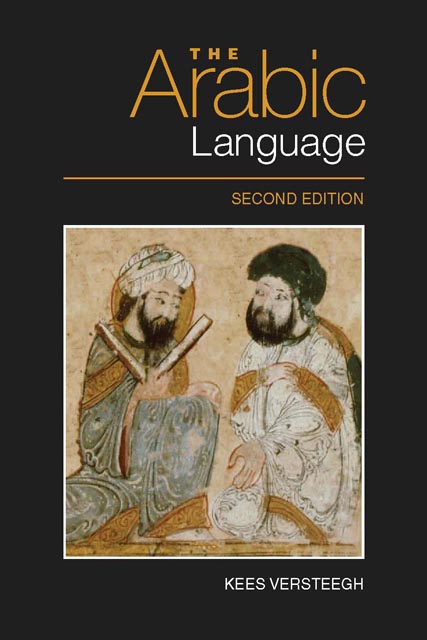Book contents
- Frontmatter
- Contents
- Preface to First Edition
- Preface to Second Edition
- List of Figures and Maps
- List of Tables
- Note on Transcription and Glossing
- 1 The Study of Arabic in the West
- 2 Arabic as a Semitic Language
- 3 The Earliest Stages of Arabic
- 4 Arabic in the Pre-Islamic Period
- 5 The Development of Classical Arabic
- 6 The Structure of Arabic
- 7 The Arabic Linguistic Tradition
- 8 The Emergence of New Arabic
- 9 Middle Arabic
- 10 The Study of the Arabic Dialects
- 11 The Dialects of Arabic
- 12 The Emergence of Modern Standard Arabic
- 13 Diglossia
- 14 Bilingualism
- 15 Arabic as a Minority Language
- 16 Arabic Pidgins and Creoles
- 17 Arabic as a World Language
- Bibliography
- List of Abbreviations
- Index
3 - The Earliest Stages of Arabic
Published online by Cambridge University Press: 18 November 2022
- Frontmatter
- Contents
- Preface to First Edition
- Preface to Second Edition
- List of Figures and Maps
- List of Tables
- Note on Transcription and Glossing
- 1 The Study of Arabic in the West
- 2 Arabic as a Semitic Language
- 3 The Earliest Stages of Arabic
- 4 Arabic in the Pre-Islamic Period
- 5 The Development of Classical Arabic
- 6 The Structure of Arabic
- 7 The Arabic Linguistic Tradition
- 8 The Emergence of New Arabic
- 9 Middle Arabic
- 10 The Study of the Arabic Dialects
- 11 The Dialects of Arabic
- 12 The Emergence of Modern Standard Arabic
- 13 Diglossia
- 14 Bilingualism
- 15 Arabic as a Minority Language
- 16 Arabic Pidgins and Creoles
- 17 Arabic as a World Language
- Bibliography
- List of Abbreviations
- Index
Summary
The Arabs
We do not know when the first nomads came to theArabian peninsula, and we certainly do not knowwhich language they spoke. It is usually assumedthat the settlement of the peninsula took place inthe second millennium Bce. In the south, advancedcivilisations were established in the period betweenthe thirteenth and tenth centuries BCE. They tradedluxury goods such as incense across the Red Sea tothe north and developed extensive commercialrelations with the Near East. The languages used inthe inscriptions of these civilisations belong tothe group of South Semitic languages; they arerelated to Arabic, but did not partake in some ofthe innovations exhibited by Arabic (cf. above, pp.21f.). The script of the South Arabian civilisationsis related to some of the North Semitic scripts,such as Phoenician, and was probably imported fromthe Syro-Palestine region to the south. It is fromthe South Arabian script that the later NorthArabian scripts are derived. The language of theSouth Arabian inscriptions is usually calledEpigraphic (or Old) South Arabian, and is dividedinto several dialects or languages, the mostimportant of which are Sabaean, Minaean andQaṭabānian. These languages must have died out soonafter the Islamic conquests. The present-day ModernSouth Arabian languages such as Soqoṭrī and Mehri,that are still spoken in a few linguistic pockets inSouth Arabia, are related to Epigraphic SouthArabian, but do not derive from it directly (cf.below p. 44).
The inhabitants of the South Arabian empires did notcall themselves ‘Arabs’. Towards the end of thesecond century BCE, some of the South Arabianinscriptions mention nomads called ʿrb (plural ʾʿrb), who are contrasted tothe sedentary population of the south. The earliestattested use of this name stems, however, from adifferent region: in a cuneiform inscription datingfrom 853 BCE, the Assyrian king Salmanassar IIImentions as one of his adversaries Gindibu from theland of Arbi orArbāya. The name‘Arabs’ as a people's name is used somewhat later,for the first time by Tiglatpilesar III (745–727BCE), and then more frequently by his successors,under the form Arabu,Aribi.
- Type
- Chapter
- Information
- The Arabic Language , pp. 26 - 41Publisher: Edinburgh University PressPrint publication year: 2014

